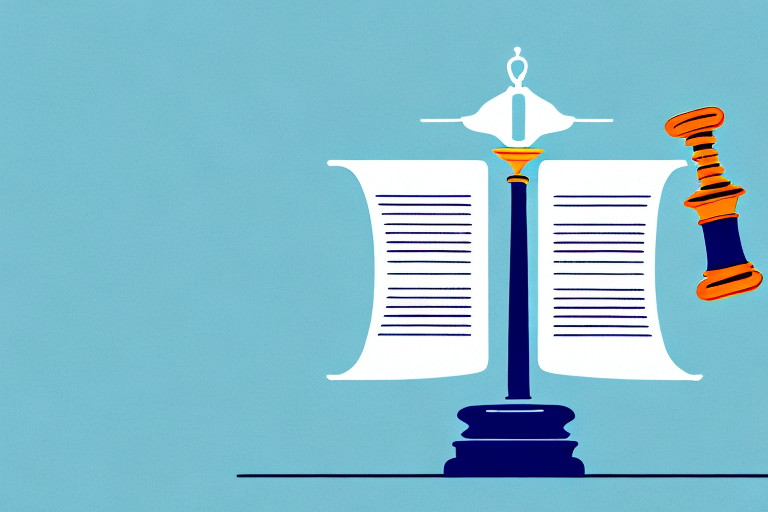Bylaws are an essential aspect of any organization, serving as a set of rules and regulations that govern its operation and conduct. These rules are typically established and agreed upon by the organization’s members or board of directors to ensure smooth functioning and promote accountability.
Understanding the Purpose of Bylaws
Bylaws serve several crucial purposes within an organization. Firstly, they outline the internal structure, roles, and responsibilities of the organization’s members and leadership. They provide a framework for decision-making processes, specifying how meetings should be conducted, how votes are taken, and how amendments to the bylaws can be made.
Furthermore, bylaws help maintain consistency and clarify expectations regarding membership requirements, admission processes, and the rights and responsibilities of members. They also define procedures for electing or removing board members and officers, ensuring a fair and democratic approach in leadership transitions.
The Importance of Bylaws in Organizations
Bylaws play a fundamental role in establishing and maintaining order, fairness, and accountability within organizations. They serve as a reference point for all members, providing clear guidelines and standards of behavior. Bylaws create a level playing field for decision-making processes, preventing arbitrary actions and establishing a systematic approach to resolving conflicts.
Moreover, bylaws establish a sense of stability and continuity within an organization. They provide a blueprint for operating procedures, facilitating a smooth transition of power and ensuring the organization’s mission and goals remain intact over time. Bylaws also contribute to the overall credibility of an organization as they demonstrate a commitment to transparency, equity, and good governance.
Key Elements of Bylaws: A Comprehensive Overview
While the specific content of bylaws may differ depending on the organization’s structure and purpose, they typically include several key elements. Starting with the preamble, which states the purpose and objectives of the organization, bylaws then outline membership requirements, rights, and obligations.
Bylaws also define the composition and responsibilities of the board of directors or governing body, specifying the number of members, terms of service, and processes for appointments or elections. Additional sections often cover meeting procedures, financial management, amendment processes, and the dissolution of the organization.
It is important to consider the specific needs and goals of your organization when creating bylaws. Customizing these elements ensures they align with the organization’s unique context and aspirations, guaranteeing effective governance and avoiding potential conflicts or ambiguities in the future.
Types of Bylaws and How They Vary
Bylaws can vary depending on the type of organization they are created for. Nonprofit organizations, for example, may have bylaws specifically tailored to meet legal and regulatory obligations associated with their tax-exempt status. Bylaws for corporations may include provisions related to shareholders, directors, and officers, following state-specific corporate laws.
Professional associations or trade unions might incorporate provisions related to membership standards, ethics, and professional development. Additionally, bylaws for community organizations or clubs might include rules for membership dues, access to facilities, and event planning.
It is important to consider the specific needs and characteristics of your organization and its intended purpose, ensuring that the bylaws adequately meet legal and operational requirements.
The Legal Implications of Bylaws: Explained
While bylaws are not legally required for all organizations, having well-drafted and comprehensive bylaws can provide several legal benefits. By clearly defining the structure and operating procedures of an organization, bylaws can help protect the organization’s legal standing and ensure compliance with applicable laws and regulations.
Bylaws provide a framework to resolve internal disputes and conflicts, reducing the likelihood of legal action being taken against the organization. They also establish a structure for decision-making processes, reducing the risk of decisions being questioned or overturned in a court of law. Moreover, bylaws demonstrate the organization’s commitment to sound governance practices, which can be beneficial in legal proceedings related to liability or tax-exempt status.
Drafting Effective Bylaws: Best Practices to Follow
Creating effective bylaws requires careful consideration and adherence to best practices. Firstly, it is essential to involve key stakeholders, such as board members, officers, or legal professionals, in the drafting process. This ensures that a range of perspectives and expertise is considered, leading to more comprehensive and robust bylaws.
When drafting bylaws, clarity and precision are paramount. Language should be concise, unambiguous, and easy to understand. Bylaws should be organized and structured in a logical manner, with clear headings and subheadings to help navigate the content. In addition, it is crucial to review and update bylaws periodically to reflect changes in the organization’s structure, legal requirements, or operational needs.
Step-by-Step Guide to Creating Bylaws for Your Organization
Creating bylaws may seem like a daunting task, but a systematic approach can make the process more manageable. The following step-by-step guide can serve as a roadmap for creating bylaws tailored to your organization:
- Identify the purpose and goals of your organization. This establishes the foundation upon which the bylaws are built.
- Research applicable laws and regulations, ensuring compliance and identifying any legal requirements specific to your organization’s type or structure.
- Convene a working group or committee responsible for drafting the bylaws. This group should include key stakeholders, such as board members, officers, and legal professionals.
- Review sample bylaws from similar organizations or industry-specific templates to gain insights and ideas.
- Create an outline of the bylaws, dividing them into sections and sub-sections. This will provide a clear structure and help organize the content effectively.
- Begin drafting each section, carefully considering the need for specific provisions and addressing all relevant aspects. Ensure that each provision aligns with the organization’s mission and goals.
- Circulate the draft bylaws within the working group and solicit feedback and input. Consider all suggestions and make revisions as necessary.
- Hold a meeting or session to discuss the revised draft and finalize the bylaws. Obtain consensus and approval from the working group or committee.
- Share the final draft with the organization’s members for review and feedback. Consider their input and make any necessary amendments.
- Once approved by the members or board of directors, adopt the bylaws as the official governing document of the organization.
Remember, bylaws should be living documents that are periodically reviewed and updated to reflect the evolving needs and circumstances of the organization.
Reviewing and Amending Existing Bylaws: What You Need to Know
As organizations grow and evolve, there may be a need to review and amend existing bylaws. Reviewing bylaws periodically ensures they remain up-to-date and aligned with the organization’s current needs and objectives. Amendments may be required to address changes in legal requirements, organizational structure, or operational practices.
If there is a need to amend existing bylaws, it is essential to follow a formal process outlined in the original bylaws. This often involves proposing amendments, providing notice to members, and voting on the proposed changes. It is important to ensure transparency throughout the process and allow all members to participate and provide input.
Common Mistakes to Avoid When Writing Bylaws
Creating bylaws can be a complex task, and it is important to avoid common pitfalls. Some common mistakes to avoid when writing bylaws include:
- Being overly vague or unclear in language, which can lead to misinterpretation or confusion.
- Omitting important provisions or failing to address specific operational or legal requirements.
- Creating overly rigid or inflexible bylaws that do not allow for adaptation or growth.
- Ignoring legal and regulatory requirements specific to your organization’s type or structure.
- Not seeking legal advice or input from professionals familiar with your organization’s legal obligations.
Avoiding these common mistakes will help ensure that your organization has effective and comprehensive bylaws.
Bylaw Governance: Roles and Responsibilities of Board Members
Bylaws often outline the roles and responsibilities of board members within an organization. The board of directors is typically responsible for overseeing the organization’s activities, setting strategic objectives, and ensuring compliance with the bylaws and applicable laws. Bylaws may specify the number of board members, their qualifications, term lengths, and processes for their election or removal.
The board’s duties may include making important decisions, approving budgets, hiring or supervising the organization’s top management, and ensuring the organization’s financial health. Bylaws should clearly define the board’s powers and responsibilities, facilitating effective governance and fostering accountability.
Ensuring Compliance with Bylaws: Tips for Organizations
To ensure compliance with bylaws, organizations should establish processes and mechanisms to monitor and enforce their provisions. It is crucial to educate all members about the bylaws and their importance. This can be achieved through training sessions, orientation programs for new members, or regular communication and reminders.
Regularly reviewing and assessing the organization’s activities against the bylaws is necessary to identify any areas of non-compliance or potential improvements. Additionally, creating a culture of accountability and transparency within the organization can contribute to a greater adherence to the bylaws.
Maintaining Transparency and Accountability Through Bylaws
Bylaws play a significant role in promoting transparency and accountability within organizations. They outline the structure of decision-making processes, ensuring that decisions are made collectively and with the organization’s best interests in mind. Bylaws also provide a mechanism for members to question and challenge decisions or actions that they believe are not in line with the organization’s mission.
Moreover, bylaws establish rules for financial management and reporting, ensuring that funds are handled responsibly and with utmost transparency. By requiring regular financial audits and disclosure of financial statements, bylaws contribute to maintaining the trust of members and stakeholders.
How Bylaws Can Help Resolve Internal Conflicts in Organizations
Internal conflicts can arise within any organization, and bylaws can provide a valuable framework for resolving such conflicts. By clearly outlining procedures for dispute resolution, bylaws can guide members and leadership in overcoming disagreements and finding mutually agreeable solutions.
Bylaws may establish mechanisms for mediation, arbitration, or the formation of committees to address conflicts. They can also provide procedures for voting on contentious issues or removing board members who are not fulfilling their duties. Bylaws serve as a reference point, allowing parties involved in a conflict to rely on established procedures and norms, minimizing the impact of personal biases or power imbalances.
Understanding the Relationship Between Bylaws and Articles of Incorporation
Bylaws and articles of incorporation are two distinct documents that serve different purposes. The articles of incorporation, also known as the certificate of incorporation or corporate charter, are filed with the appropriate government authority when an organization is formed.
Articles of incorporation typically contain basic information about the organization, such as its name, purpose, registered address, and initial board members. They establish the legal existence of the organization as a separate entity and outline its rights and powers.
On the other hand, bylaws provide the detailed rules and regulations that govern how the organization will operate. Bylaws expand on the information provided in the articles of incorporation, specifying the organization’s membership requirements, voting procedures, board composition, meeting protocols, and other operational guidelines.
While both documents are important for an organization, the scope and level of detail in bylaws make them the primary governance document that guides day-to-day operations and decision-making processes.
Note: SEO-friendly subheadings should contain relevant keywords, be concise, and accurately reflect the content of the article while piquing reader interest.
It is essential to pay attention to search engine optimization (SEO) when writing article subheadings. SEO-friendly subheadings should contain relevant keywords related to the content, ensuring that they accurately reflect the topics discussed in the article. A concise and captivating subheading can capture reader interest and encourage further reading.
By structuring the article with well-crafted subheadings, readers can easily navigate and understand the comprehensive coverage of the topic. Additionally, search engines can better understand and index the content, increasing the visibility and accessibility of the article to a wider audience.
In conclusion, understanding what bylaws are and their significance in organizations is crucial for effective governance. Bylaws serve as a guidebook for an organization’s internal operations, ensuring consistency, transparency, and accountability. From understanding their purpose and importance to drafting and amending them, bylaws provide a solid foundation for the smooth functioning and success of any organization.




